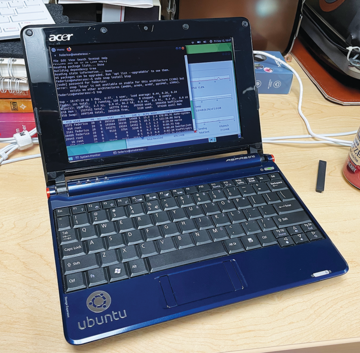
Lead Image © Lucy Baldwin, 123RF.com
Building a custom Cyberdeck
Hit the Deck
The idea of a dedicated terminal to investigate configuration inconsistencies and performance issues in a data center not thoughtfully configured with rackmount monitors and keyboards is an old one for me – I have been trying such tricks since the Acer Aspire One [1] made its first appearance.
A low-cost netbook seemed like the ideal, all-purpose monitoring instrument back when its product line launched nary 20 years ago (Figure 1). Its underpowered early Atom CPU cannot support a modern graphical environment, but the intended use as a terminal in init 3 mode moots that concern entirely. Sadly, I am unable to fully enjoy my sharply configured, cutting-edge, Rolling Rhino-powered device [2] because my large hands are a poor match to a netbook's smaller keyboard – especially when typing fast and furious as rapid troubleshooting demands. It's time to give this project another try, but with the modern hardware of the 2020s!
 Figure 1: The diminutive (and shiny!) Acer Aspire One was a first attempt at a compact terminal. The keys' minute size was an ill fit to my full-size hands.
Figure 1: The diminutive (and shiny!) Acer Aspire One was a first attempt at a compact terminal. The keys' minute size was an ill fit to my full-size hands.
Buy this article as PDF
(incl. VAT)





